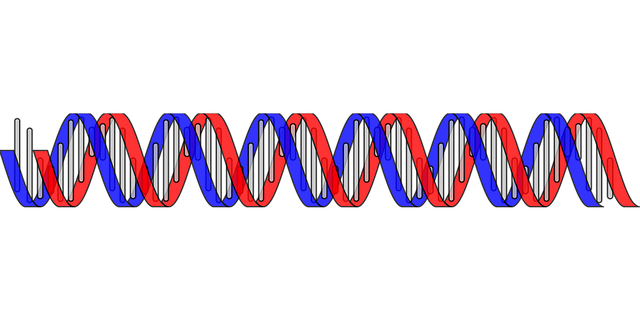NAD+ therapy for aging presents a promising approach to combat natural aging by restoring cellular energy production and repair through nicotinamide riboside (NR) supplementation, targeting age-related NAD+ decline. While clinical studies show potential benefits like enhanced cellular resilience and mitochondrial function, significant research limitations and debates regarding long-term safety and efficacy exist, necessitating further study. Considered generally safe, with mild side effects like nausea and headaches, more serious reactions are rare. Consulting healthcare professionals before starting therapy is crucial for managing risks, as personal health assessments and regular monitoring are essential to safeguard liver and kidney function. Staying informed about ongoing research is vital for refining safety guidelines and making confident decisions regarding NAD+ therapy as an anti-aging strategy.
Is NAD+ therapy safe? Exploring the potential risks and side effects of this emerging anti-aging treatment is crucial. NAD+ therapy, aimed at revitalizing cellular energy production, has garnered attention for its promise in combating aging. This article delves into the safety profile of NAD+ therapy for aging, examining clinical studies, identified risks, and essential safety measures. By understanding both the potential benefits and drawbacks, individuals can make informed decisions regarding this cutting-edge treatment.
Understanding NAD+ Therapy for Aging: A Basic Overview
NAD+ therapy for aging is a promising area of research focused on slowing down and potentially reversing some aspects of the natural aging process. Nicotinamide adenine dinucleotide (NAD+) is a coenzyme found in every cell of our bodies, playing a critical role in energy production and cellular repair. As we age, NAD+ levels naturally decline, leading to increased oxidative stress and reduced cellular function.
This therapy aims to raise NAD+ levels by administering nicotinamide riboside (NR), a precursor to NAD+, either orally or intravenously. By doing so, it’s hypothesized that NAD+ therapy for aging could boost cellular resilience, enhance mitochondrial function, and support overall health in older adults. However, despite growing interest, it’s crucial to acknowledge the current limitations of research and ongoing debates regarding its long-term safety and efficacy.
Potential Benefits and Claims of Safety in Clinical Studies
NAD+ therapy for aging has garnered significant interest due to its potential benefits in slowing down the natural process of aging. Clinical studies have suggested that boosting NAD+ levels may improve cellular function, enhance energy production, and protect against age-related diseases. Researchers claim it could revolutionize anti-aging strategies by addressing the root causes of aging cells.
While these initial findings are promising, it’s crucial to approach these claims with caution. As with any medical treatment, there are potential risks and side effects associated with NAD+ therapy. Some clinical studies have reported mild adverse events like nausea, headache, and fatigue. More extensive research is needed to fully understand the long-term safety and efficacy of this therapy, especially in various populations and for different applications related to aging.
Risks and Side Effects: What Research Says
While generally considered safe, NAD+ therapy for aging still carries potential risks and side effects that have been studied extensively. Research has shown that NAD+ supplementation can be well-tolerated by most individuals, with adverse events rarely reported. However, some common side effects include nausea, vomiting, diarrhea, and headaches, which are often mild and transient.
More serious but rare reactions may include liver enzyme abnormalities and potential interactions with certain medications. It’s crucial for individuals considering NAD+ therapy to consult with a healthcare professional beforehand, as they can assess individual health status, review medications, and provide guidance on managing any potential risks or side effects that may arise.
Safety Measures and Precautions for Administering NAD+ Therapy
When considering NAD+ therapy for aging, it’s crucial to understand and adhere to strict safety measures. This therapeutic approach involves administering nicotinamide adenine dinucleotide (NAD+) to enhance cellular functions, but it requires careful handling due to potential risks. Medical professionals should carefully monitor patients during and after treatment, as there is a risk of adverse reactions, such as skin irritation or allergic responses at the injection site. Regular blood tests might be necessary to ensure safe levels of NAD+ and avoid any negative effects on liver or kidney function, especially in individuals with pre-existing health conditions.
Precautions include evaluating patients’ medical histories, considering drug interactions, and tailoring treatment plans based on individual needs. Given that NAD+ therapy is relatively new, ongoing research will provide further insights into optimal dosing, duration, and safety protocols. It’s essential for both patients and healthcare providers to stay informed about the latest findings to make informed decisions regarding this promising anti-aging intervention.
While NAD+ therapy for aging shows promise in clinical studies, it’s crucial to approach its safety with a nuanced perspective. While research suggests minimal risks and side effects, individual reactions may vary. Before pursuing any treatment, thorough understanding of the procedures, potential drawbacks, and consultation with healthcare professionals are essential. As the field continues to evolve, ongoing research will provide further insights into the safety and efficacy of NAD+ therapy for aging.
